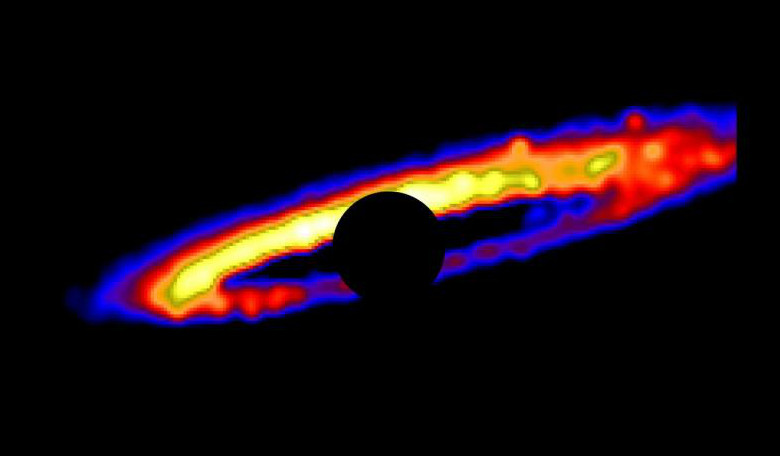A massive planet 11 times the size of Jupiter, but considerably younger, has given scientists a rare peek at the final stage of planet formation but from a different perspective.
Located 300 light-years from Earth in the constellation Crux, a fledgling planet not more than 13 million years old within the star system HD 106906 has piqued the interest of researchers as its location does not seem to fit with current ideas of planet formation. The traditional view of how Solar Systems such as our own evolve begin with a gigantic gas cloud that collapses due to its own gravity and as it does so it forms a debris disk. As the gas slowly evaporates, this disk provides the material for planets to form.
To date, over 1700 such debris disks have been detected and over 40 have been resolved with optical or infrared imaging. What sets HD 106906 apart, is its apparent solitary planetary companion, named HD 106906b, which is currently at least 650 times as far from its star as the Earth is from our Sun. It is so far away that it takes 1,500 years for the planet to orbit its central star.
This means that HD 106906b has a larger orbit than any other exoplanet discovered to date and it is throwing into question just exactly how and where it formed.
"This is such a young star; we have a snapshot of a baby star that just formed its planetary system," said Smadar Naoz, a UCLA assistant professor of physics and astronomy, and a co-author of the study. But, “our current planet formation theories do not account for a planet beyond its debris disk," added Naoz.
Normally, researchers model how a debris disk looks the way it does by focusing on the effects of a planetary-mass perturber orbiting within the disk. However the study's lead author Erika Nesvold, a postdoctoral fellow at the Carnegie Institution for Science, looked at this problem from the opposite view and wrote a software program called Superparticle-Method Algorithm for Collisions in Kuiper belts and debris disks, or SMACK for short, to see the effects that HD 106906b might have on the disk and not the other way around.
The results from Nesvold’s model correlate with certain observational features of the disk such as the position angle (PA) of the disk and it also accounts for why the east side of the disk is brighter than the west side seen in near-infrared images. This has lead the team to suggest that the planet formed outside of the debris disk, where it is visible today, instead of being formed inside the disk and then having been ejected out far beyond it. This currently goes against the grain of planet formation theories but “it works perfectly," to explain the shape of the debris disk said Naoz.
"In our solar system, we've had billions of years of evolution," said Michael Fitzgerald, UCLA associate professor of physics and astronomy, and the study's other co-author. "We're seeing this young system revealed to us before it has had a chance to dynamically mature."
The model results also benefits from being relatively simplistic in that is does not require any exotic physics or hidden planets to explain them, which is not always the case when trying to explain the formation of other solar systems. "There are no assumptions; this is just physics," said Naoz.











